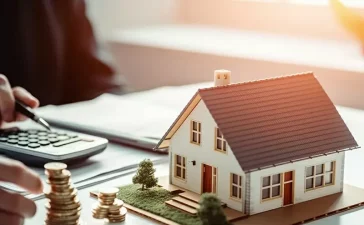In the dynamic world of real estate, buying and selling homes often become significant milestones in our lives. Whether you’re moving to a new city, upgrading to a larger space, or downsizing for a more minimalist lifestyle, the process of buying and selling homes has a profound impact on not just your living situation but your long-term financial health as well. But beyond the transactional nature of these events, the process offers an opportunity for improvement—both in terms of the space you’re moving from and the one you’re moving to.
This article will guide you through how buying and selling can be used as a tool to improve your home—both as an investment in your personal well-being and as a strategic move to enhance the value of your property. Whether you’re a first-time homebuyer, a seasoned seller, or someone who is simply curious about how these activities can improve your lifestyle, this guide will offer insightful steps to take for maximizing your home improvement journey.
The Importance of Selling the Right Way
Selling a home is often an emotional process, as it marks the end of one chapter in your life. But if approached strategically, the sale of your current property can lay the groundwork for a better future home. The way you sell your home can significantly impact both your financial return and the potential for future improvement.
1. Preparation: Making Your Home Attractive to Buyers
Before putting your home on the market, it’s important to ensure it’s in the best possible condition. Small improvements can increase the perceived value of your property and ensure it sells for a higher price. A fresh coat of paint on the walls, decluttering, and deep cleaning can do wonders for presenting your home in the best light.
Focus on curb appeal, as the exterior of your home is the first impression buyers will have. Simple landscaping improvements like trimming hedges, planting flowers, or even power-washing your driveway can create a lasting impact. Consider small renovations or repairs that could make a difference in the buyer’s eyes—fixing leaky faucets, replacing outdated hardware, or upgrading lighting fixtures. These updates, though subtle, can signal to potential buyers that the house has been well cared for and is worth the asking price.
2. Pricing and Strategy: Knowing Your Market
Pricing your home appropriately is one of the most crucial aspects of selling. Overpricing can deter buyers, while underpricing can leave money on the table. A well-thought-out pricing strategy should consider recent sales of similar properties in your area, the current market conditions, and the unique features of your home. Consulting with a real estate agent can help you make an informed decision, ensuring that your pricing aligns with current market trends.
Additionally, developing a marketing strategy is key. High-quality photos and virtual tours can make a huge difference in attracting potential buyers. In the digital age, many buyers start their home search online, and a strong online presence is essential. From social media marketing to listing on popular real estate websites, ensuring that your home is visible to as many potential buyers as possible will increase the likelihood of a successful sale.
3. Staging Your Home for Maximum Impact
Staging can have a significant impact on how buyers perceive the potential of your home. Staging involves arranging furniture and decor in such a way that highlights the home’s best features while minimizing any shortcomings. If your home is vacant, consider hiring a professional stager who can bring in pieces that will make the space feel inviting and functional. Even small touches, like adding fresh flowers or setting the dining table, can make the property feel warm and welcoming, helping buyers envision themselves living in the space.
Buying for Improvement: Finding a Home that Suits Your Needs
While selling your home can help you achieve your goals, buying a new one offers an even greater opportunity to improve your lifestyle, living space, and future financial situation. The home-buying process is often more than just finding a place to live—it’s about finding a space that complements your needs and aspirations.
1. Know Your Needs and Budget
Before embarking on the home-buying journey, it’s essential to have a clear understanding of what you’re looking for. This includes knowing how much space you need, what amenities are essential, and what style of home will suit your lifestyle. Whether you’re looking for a family-friendly neighborhood, proximity to work, or ample outdoor space, defining your needs can help you narrow down your search.
Equally important is setting a budget. Understanding what you can comfortably afford will help you avoid falling in love with a property that stretches your finances beyond your means. Factor in not only the price of the home but also ongoing costs like property taxes, utilities, maintenance, and potential renovation expenses. By setting a realistic budget, you’ll ensure that the home you purchase aligns with your financial capabilities.
2. Location: Choosing a Neighborhood that Will Appreciate in Value
The location of your new home can dramatically impact your long-term happiness and the value of your investment. In real estate, the old adage “location, location, location” holds true. When choosing where to buy, consider factors such as proximity to schools, public transportation, shops, and work. Research the neighborhood’s growth potential, crime rates, and overall appeal.
In addition to these practical considerations, it’s also important to think about the emotional aspect of the neighborhood. Is it a place you can see yourself thriving in? Does it have the vibe and amenities that suit your lifestyle? Even if a location is not the most convenient, purchasing in a growing area that is predicted to appreciate in value can be a wise financial move.
3. Vision for Improvement: Look for Potential
When buying a home, it’s not always about finding the perfect property; sometimes, it’s about recognizing a property with potential for improvement. Many buyers underestimate the possibility of transforming a home through renovations. Look for properties that may need cosmetic upgrades like a fresh coat of paint, new flooring, or an updated kitchen. By purchasing a home with room for improvement, you can increase its value and make it truly your own.
Don’t be afraid to look at homes that may not meet all your criteria at first glance. Sometimes, a little creativity and effort can transform a dated space into a modern dream home. With the right improvements, you can significantly increase the home’s value, making it a sound investment in both your lifestyle and your financial future.
4. Inspection and Negotiation: Protect Your Investment
Once you’ve found the perfect home, it’s time to have it inspected. A professional inspection will reveal potential issues that could impact the home’s value, such as structural problems, plumbing issues, or outdated electrical systems. Understanding these potential problems beforehand allows you to make informed decisions about whether to proceed with the purchase, negotiate the price, or ask the seller to fix specific issues.
In the negotiation phase, don’t be afraid to leverage what you’ve learned from the inspection to secure a better deal. Sellers may be willing to lower the price, offer credits for repairs, or even make concessions in exchange for a quick sale. This is where a skilled real estate agent can be a valuable asset, guiding you through the negotiation process to ensure you get the best possible deal.
The Synergy of Selling and Buying
When buying and selling homes, each step you take can improve your lifestyle and financial situation. Selling your current home at the right price and with proper preparation ensures a better return, which can be reinvested into your next purchase. By purchasing a home that meets your needs and has room for improvement, you’re setting yourself up for long-term success.
In the end, improving your home through selling and buying is more than just a financial transaction; it’s a journey of enhancing your lifestyle, creating a space that reflects who you are, and making smart decisions for your future. By combining a well-executed sale with a thoughtful purchase, you create the foundation for a more fulfilling and improved living experience.









